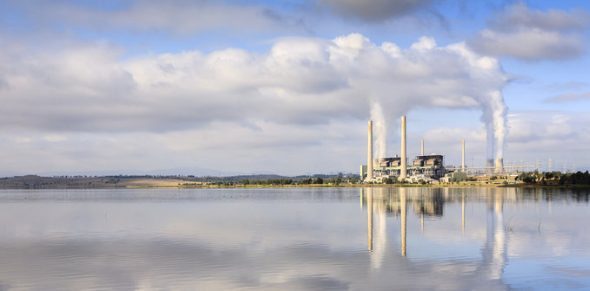
Australia’s energy watchdog, the Australian Energy Market Operator (AEMO), has issued a stark warning: more wind and solar power will demand new approaches to avoid interruptions to electricity supply.
In its annual Electricity Statement of Opportunities, released last week, AEMO indicated that the overall outlook for reliability has improved. So far, so good.
However, South Australia, Victoria, and New South Wales are potentially at greater risk of interruptions within ten years if the current trend of shutting down old coal-fired power stations accelerates, as we can expect from Australia’s efforts to meet national and international climate targets.

The threat of power blackouts is reliable headline fodder as seen in yesterday’s Australian Financial Review. But the solution to this very real challenge is not to cling to ageing fossil fuel power stations.
Rather, as AEMO Chief Operating Officer Mike Cleary put it:
possible solutions could include an increased interconnection across [the electricity market], battery storage, and demand side management services.
While there is much excitement about battery technology, it is the oft-forgotten human dimension that offers the greatest potential. We consumers, the so-called “demand side” of the market, can play a crucial role in reducing the strain on the electricity network, which will in turn make for more reliable power.
The biggest variability that the electricity sector has to contend with is not intermittent solar or wind generation output, but the ups and downs of power demand.
People power
Helping business and household consumers manage their demand for power (or “demand management”) is a win-win scenario – lower costs for electricity and a stronger electricity system. Demand management and energy efficiency are key elements in lifting Australia’s energy productivity. Lifting energy productivity means we do not need to slow down the transition to a low-carbon economy.
Research from the University of Technology Sydney’s Institute for Sustainable Futures (ISF) that supported GetUp!’s Homegrown Power Plan highlights that we can not only retire coal power to achieve our climate targets, but also shift entirely to 100% renewable electricity generation by 2030.
However, to do this affordably we need to get smarter about saving energy and supporting the grid. GetUp!’s plan factored in a target to double Australia’s energy productivity by 2030, as advocated by the Australian Alliance to Save Energy and ClimateWorks.
Despite the potential, neither AEMO nor any other institution is tasked with assessing demand management opportunities that will strengthen the network and promote renewables. Work is needed to understand this demand-side opportunity, just as AEMO’s latest report provided for electricity supply.
It may also be time to revisit AEMO’s 2013 modelling on 100% renewables that did not factor in major energy productivity gains.
Switching up
The importance of demand management has been recognised since the dawn of the National Electricity Market in 1992. But this potential has never been properly tapped.
Happily, there are signs that this is finally changing. For example, the Australian Energy Regulator has announced a process to design a Demand Management Incentive Scheme. This will provide an incentive for electricity networks to help consumers reduce demand and cut energy costs.
The more progressive energy systems worldwide have already incorporated energy productivity into their energy policies and strategies. Germany is implementing its National Action Plan for Energy Efficiency as one of the twin pillars of its Energiewende (energy transition). And a 23% reduction in buildings’ energy consumption by 2030 is one of the three key targets to achieve New York’s “Reforming the Energy Vision”.
The International Energy Agency (IEA) has also recommended energy efficiency improvements as its first measure to achieve peak energy emissions by 2020, in tandem with a US$130 billion increase in renewables investment. This “bridge” scenario was the IEA’s contribution to the 2015 Paris climate summit.


Time for Australia to get serious
It is now time for Australia to embrace the link between demand management, energy productivity and renewable energy. We need these to work together so that we can achieve our carbon reduction goals while protecting electricity security and economic growth.
We have taken a good first step, releasing a comprehensive National Energy Productivity Plan at the end of 2015. It is not quite as ambitious as proposed by the Homegrown Power Plan (it only seeks a 40% improvement between 2015 and 2030) but it is a step in the right direction.
What are missing, as RMIT energy researcher Alan Pears points out, are the resources to make it happen: no additional funding has been allocated to deliver the 34 recommended measures.
We can unlock Australia’s energy productivity potential. And we can have a clean, affordable and reliable electricity system. But this will not happen by accident.
Let’s encourage our utilities to engage energy consumers in providing the solutions. In other words, power to the people.
![]() Source: The Conversation. Reproduced with permission.
Source: The Conversation. Reproduced with permission.







